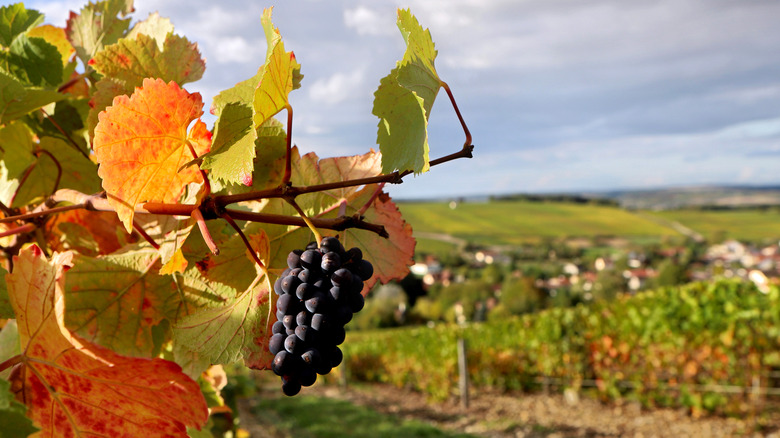How Champagne Growers Are Trying To Reduce Carbon Emissions
To say the production of Champagne is heavily regulated is an understatement. The trade association Comité Champagne explains that not only are grape varieties regulated (there are seven permissible types), but the timing of planting is limited (authorities must be notified, and planting must be complete by late May or late July if vines are started in pots). Regulations exist to serve several functions, among them maintaining quality in the region's wines and protecting and preserving the land on which grapes for your favorite sparkling wine are grown.
One of the regulations intended to promote the cultivation of high-quality fruit is the one that governs the planting density of vines, which is currently set at a minimum of 8,000 vines per hectare, according to Decanter. Comité Champagne explains the benefit of high-density planting: "The more the vines have to compete with their neighbours for water and nutrients, the smaller and better the crop load per vine." Balancing the supposed benefits of high-density planting with recommendations intended to decrease carbon emissions has been controversial, to say the least.
Regulations have changed to permit lower density planting
The Syndicat Général des Vignerons de la Champagne (SGV) is the organization that implements the regulations imposed by the Institut National de l'Origine et de la Qualité (INAO), according to Decanter, and the SGV recently got approval to officially reduce the minimum density of vines to 6,000 plants per hectare. Food & Wine notes the SGV explains the measure may reduce carbon emissions by as much as 20% by permitting growers to "use better equipment" and is part of their sustainability efforts that include reducing herbicides and pesticides.
There is skepticism about the real reasons for the new measure permitting growers to plant fewer plants per hectare, according to Decanter, which points out that growers' organization Vignerons Indépendants believes the new regulations are a step toward permitting mechanical harvesting in Champagne — a move that would be intended to benefit large Champagne producers who may be more concerned about quantity, rather than quality. Citing worries that lower density planting may negatively affect both biodiversity and soil health, Vignerons Indépendants vigorously opposed the adoption of the new regulations. Lower density planting is optional under the new measures, and it remains to be seen whether they'll affect climate change.

